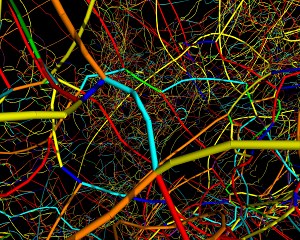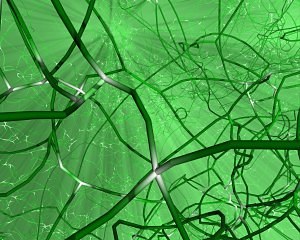Ever since the Iron Age, we have known that beating certain metals repeatedly makes them harder, but have not until now understood exactly why. US researchers have discovered finally that three is a magic number in this process in which defects known as dislocations get knotted toughening up the battered metal. Vasily Bulatov and colleagues at Lawrence Livermore National Laboratory in California realized that the standard explanation for metal hardening was ignoring a key element.
Bulatov and colleagues Luke Hsiung, Meijie Tang, Athanasios Arsenlis, Maria Bartelt, Wei Cai, Jeff Florando, Masato Hiratani, Moon Rhee, Gregg Hommes, Tim Pierce, and Tomas Diaz de la Rubia used a sophisticated series of computer simulations and electron microscopy experiments with the metal molybdenum to investigate the changes that take place during hammering. They found that three line defects (also known as dislocations) in the crystal structure of the metal create a stronger bond between the metal atoms than when there are only two dislocations intersecting. Dislocations are essentially displacements of atoms from their regular packing in the crystal layers of a metal and are what allow metals to be bent, stretched, and indeed beaten into shape.

Vasily Bulatov
The theory of why dislocations matter to metals was devised in the 1930s and since then experimental research has focused on the interactions between these defects and how they give rise to the hardening of metals.
However, the Livermore Lab team found that three or more dislocations create a strong, almost indestructible locking mechanism between crystal units in a metal. When you beat on metal, dislocations multiply like crazy, Bulatov explains, The metal gets stronger, but we didn’t know exactly how that strength came about. What we found was that the strength becomes greater each time three dislocation lines intersect. Two dislocation lines could unzip, but three intersecting is a tough structure to crack. Bulatov adds that this hardening mechanism could be applied in any strong metal, from bridges to ships to reinforcement girders within the walls of buildings.

The tangled web of dislocation lines simulates the structure of a beaten metal. (Credit: Rich Cook)
Potentially, you can take advantage of this behaviour, he says, Dislocation interaction was known for 70 years. We now show exactly how it happens. Two at the time was thought to do it, but three at a time makes a big difference. The team publishes details of the research in Nature.

Metals can get knotted when they are hit making them harder. (Credit: Rich Cook)
Further reading
Nature, 2006, 440, 1174-1178
http://dx.doi.org/10.1038/nature04658
Vasily V. Bulatov
https://www-pls.llnl.gov/?url=about_pls-scientific_staff-bulatov_v
Suggested searches
molybdenum
metals
hardness
dislocations
crystal structure